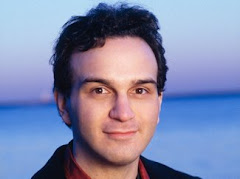A reasonably sized audience attended a mid-week violin and piano recital by James Ehnes and Andrew Armstrong. Considering the travelling difficulties of getting into Dewan Filharmonik Petronas Kuala Lumpur in the middle of a working weekday, the faithful audience were treated to a superb and eclectic recital by this eminent duo.
Beethoven's earliest violin and piano opus, the Violin Sonata Op 12 No 1 was Ehnes' and Armstrong's first offering. Adopting a bright and lively tempo, the duo's brilliant tone (thanks to Ehnes' lovely 1715 Marsick Stradivarius and Armstrong's Steinway) set Beethoven's opening joyous movement into motion. The duo's balance and "give-and-take" was exemplary and this was maintained into the second movement's theme and variations. This was particularly palpable in the minor variation's large dynamic swells. Ehnes and Armstrong imbued the ensuing final Rondo: Allegro with gruff Beethovenian humour and its characteristic offbeat accents and distant modulations.
Ehnes and Armstrong proffered us Ravel's Second Violin Sonata in G major next. The duo's polished playing was entirely appropriate for one of gentlest opening movements of the Romantic violin sonata repertoire. The modal melodies flowed sweetly, graced by warm and judiciously applied vibrato adding significantly to Ehnes' ethereal and shimmering tone. The middle blues movement took on an insouciant character, with subtly graded rubati and portamenti enhancing its obvious musical homage to Gershwin. The Perpetuum mobile finale was brilliant executed and crisply played.
After the interval, the second half opened with Brahms’ Scherzo from the FAE Sonata, performed pleasingly with a lighter than usual touch reflecting the "joke-like" character of a Scherzo, rather than the heavier approach that duos mostly apply to the piece. To end the recital, Ehnes and Armstrong gave us a wonderfully virtuosic rendition of Corigliano's tonally exciting and rhythmically exacting Violin Sonata of 1962-1963.
For his encores, Ehnes elected for mainly technical wizardry, performing Heifetz’s arrangement of Rimsky-Korsakov’s Flight of the Bumblebee with stunning spiccato bow strokes that barely lifted off the violin strings. The next two encores were Sarasate's Zapateado Op 23 No 2, played dashingly with pristine artificial harmonics and superb cracking left-hand pizzicati and Wieniawski's Scherzo tarantelle Op 16, performed with a Heifetz-like intensity but with Milstein's fluidity and purity.
Just when the audience thought Ehnes would play a further string of encores like Itzhak Perlman does in recital, he chose to say goodnight with his final encore, the rarely-played and touching Sibelius Berceuse (No 6 of Six Pieces Op 79). What sets Ehnes apart from other modern-day virtuosi is that even in his first three encore pieces, he never overtly showboats his violinistic skills – if anything he is so unassuming that one forgets how fiendishly arduous those pieces are.
Subscribe to:
Post Comments (Atom)















































No comments:
Post a Comment